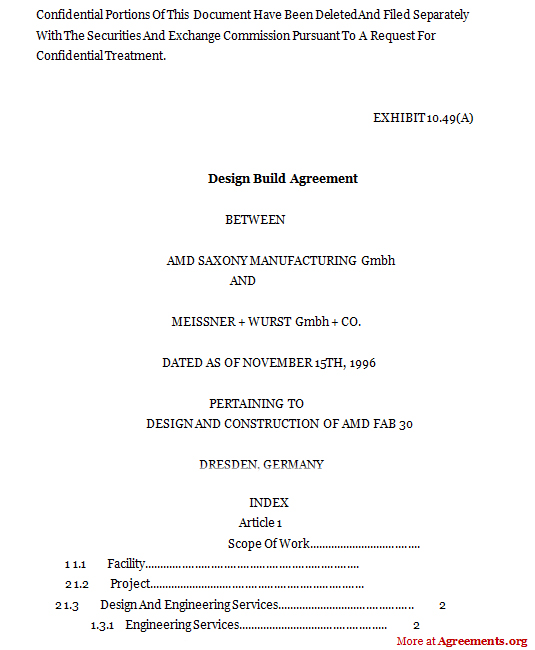Design and build contract is a common term used in the construction industry. It can be defined as a project delivery system where a single team provides the owner with design and construction services. It is also known as single-source responsibility and design-construct. The designer and the contractor work together as a single entity and provide design and construction services according to the owner’s requirements.
It is a collaborative effort where any change in the plan is addressed by them together as a team. In contrast, in a traditional design-bid-build arrangement, the owner enters into separate agreements with the designer and builder. The designer has to prepare the designs before the owner can issue a call for bids for construction.
What Is a Design and Build Contract?
A design and build contract is a single contract between the owner of a construction project and the design and build contractor. It contains the terms of arrangement such as the employer’s requirements, documentation related to the building due diligence, proposed construction program and schedule, obligations and responsibilities of the parties involved.
First, the owner (employer) appoints a design team to lay down the project specifications (known as employer’s requirements). He then tenders the requirements, and the contractor bids a lump sum amount that includes the design completion fee. The employer may also request the contractor to continue to employ its design team and complete the design, thereby forming a design and build contract.
Key Terms of a Design and Build Contract
The following are some of the important terms found in a contract:
- Names of the employer and the contractor
- Definition of terms used in the contract
- Description of the project
- Project schedule
- Work to be done by the design and build firm
- Team for the project
- Design-build requirements and standards
- Compensation for the services
- Responsibilities of the owner, such as updating the project budget and giving information about the project.
- Obligations of the design and build firm
- Damages for the delay in project completion
- Insurance requirements
- Owner’s right to order an audit of the design-build firm and its subcontractors during the subsistence of the agreement
- Grounds for termination
- Governing law of the agreement
- Signature of both the parties along with the date
How to Draft the Design and Build Contract?
A design and build contract is usually a very lengthy document detailing every aspect of the construction project. Drafting such a document entails a number of meetings between the parties to arrive at terms that will be agreeable to both. The meetings involve discussions on employer requirements, the design-build process, related costs, approval of plans, and other related issues. The following points should be carefully discussed.
- Price: All aspects of costs associated with the project, such as how the costs will be calculated, should be clearly discussed. There should be no scope for ambiguity.
- Discuss how a change in the project schedule or cost will be handled.
- Since there are a number of steps in a design-build project, clearly state the time of completion of each step.
- Some owners like to have a specific team from the design-build firm. Discuss the circumstances under which the firm will be allowed to replace a team member and include the same in the contract.
- Clearly define the insurance liabilities of the parties- who will carry out insurance, what must be covered therein.
- State the notice requirements of the parties and how such notices will be dealt with.
- Discuss the possibility of a dispute during the project. In case a dispute arises, it should be clarified as to how it will be handled and its impact on the progress of the project.
- Ensure that all subsequent contracts between the design-build contractor and its subcontractors are consistent with the main contract for design and build.
[ Also Read: Construction Contract]
Advantages and Disadvantages of a Design and Build Contract
A design and build contract comes with its own set of advantages and disadvantages.
Advantages:
- Saves time: Since it is a collaborative effort, a lot of time is saved in designing and construction as there are fewer problems as far as coordination is concerned.
- Saves costs: A single team for designing and construction reduces the employer’s costs.
- Single point of responsibility: Fixing accountability is easier as there is only one entity involved in the project.
- There is effective communication as there is only one channel of communication with the design and build firms.
- Reduced litigation: Since liability can be attributed in the design and build contract, it leads to fewer claims against the parties.
Disadvantages:
- If the design and build contractor is allowed to make changes to the specifications, they may work to the lowest possible specifications to achieve the basic requirements.
- Design and build are inherently different concepts. Since builders are not architects, there is a high probability that they may not know about the legal and design requirements for the project.
Download a Sample Design and Build Contract
A template of a design and build contract can be downloaded from here.

Download this USA Agreement of Limited Partnership for only $9.99
By clicking the button below, I agree with the Terms & Conditions.